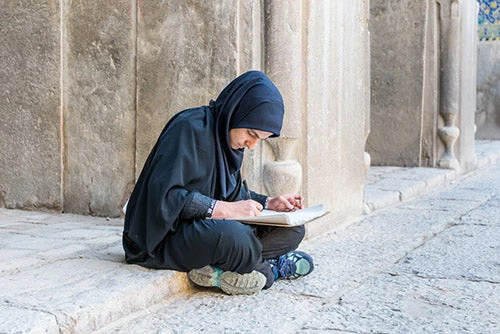 Every year, Iranian schools and universities are in back in session on the first day of autumn—September 23
rd. Despite educating some of the world’s top minds, such as the late
Maryam Mirzakhani, the only women recipient of the Fields Medal, the most prestigious award in mathematics, Iran’s educational system has been in crisis. In this short space, I want to focus on the crisis Iran’s higher education system has been facing, which has taken a turn for worse in the past decade.
Every year, Iranian schools and universities are in back in session on the first day of autumn—September 23
rd. Despite educating some of the world’s top minds, such as the late
Maryam Mirzakhani, the only women recipient of the Fields Medal, the most prestigious award in mathematics, Iran’s educational system has been in crisis. In this short space, I want to focus on the crisis Iran’s higher education system has been facing, which has taken a turn for worse in the past decade.
Allow me to start with a staggering figure: In 2015-2016, more 4.3 million students were studying in Iran’s universities. This means that more than 5% of country’s total population or 7.4% of country’s adult population (aged 19 and above) were enrolled in Iran’s higher education system. To get a better sense of what these numbers mean, let’s look at the same statistics for the case of the U.S. In 2016, 20.4 million or little over 6% of the U.S. population (or 8.3% of U.S. adult population 19 and above) attended college. The U.S. economy is about 47 times the size of Iran’s economy and many of the graduates from U.S. colleges and universities are foreign nationals and will get absorbed in the labor force of their respective countries. Considering all of these facts, the U.S. has just enough college graduates to get absorbed into its economy.
This is where Iran’s higher education system is in crises: producing far more college graduates (and often of low quality) than the domestic economy can absorb. This trend, which has gotten worse in the past decade, has in turn exacerbated the economic, social, and political problems inside Iran.
First and foremost is the dissatisfaction of the youth with the economy. Official World Bank figures put Iran’s youth unemployment (age 15-24) at about 26% in 2016. This level of youth unemployment, which is, by the way, a very conservative figure, is a serious threat to Iran’s economic and social stability as well as to the country’s security. About half of these unemployed youth are college educated. With a degree from college, no matter its quality and its relevance to Iran’s economy, they have higher expectations and are therefore more dissatisfied with the way the Iranian economy has been performing.
I have been following Iran’s economy and society for some time now and have been living in the country for more than a year for research and teaching purposes. I have been in constant contact with the Iranian youth at the University of Tehran, one of the two main destinations of Iran’s brightest students. I can attest to the fact that most of these kids, who are the top 20% of their high schools’ graduating classes, have no vision, plan, or hope for their future after graduating from Iran’s top university. For them, getting a job after graduation is a distant dream, as most jobs in Iran are found through personal contacts. One can sense their deep frustration, which has also led to many social ills and much political strife inside the country.
I have been approached many times by these students seeking advice on how to get admission to American or European universities for their graduate studies as they see no future for themselves in their country. This brain-drain is the second crisis facing Iran’s higher education system. In other words, Iran’s universities are training top students (often free of charge) only for the Western economies to benefit from such investment by absorbing them. According to an old IMF study dating back to 1999, it is estimated that over 25% of Iranians with tertiary education live and work abroad in OECD countries. The picture is certainly worse now. Iran’s brain drain is estimated to cost the country over $50 billion each year in economic losses or one-eighth of its GDP in 2016. Without any doubt, this poses a significant loss for the country in economic terms.
Iran’s economy is facing many obstacles that make rapid growth in the economy and high rates of job creation almost impossible. In future blogs, I will point to some of these obstacles. This means the only solution to Iran’s over-education problem is reducing the number of college graduates in the country to a level that can be absorbed by the economy. Not only will this free up resources that can be directed towards increasing the quality of education and focusing on skills and degrees that can be absorbed by the economy, it will also reduce or even reverse the rate of brain-drain. This is because, a smaller supply of college graduates will increase their chances of finding good-paying jobs inside Iran, therefore reducing their incentives to go through the various troubles and costs of emigration. This will allow Iran to benefit from the investments it has made in educating its youth. This may seem like a harsh policy; but harsh conditions often require harsh measures.


Join the Conversation